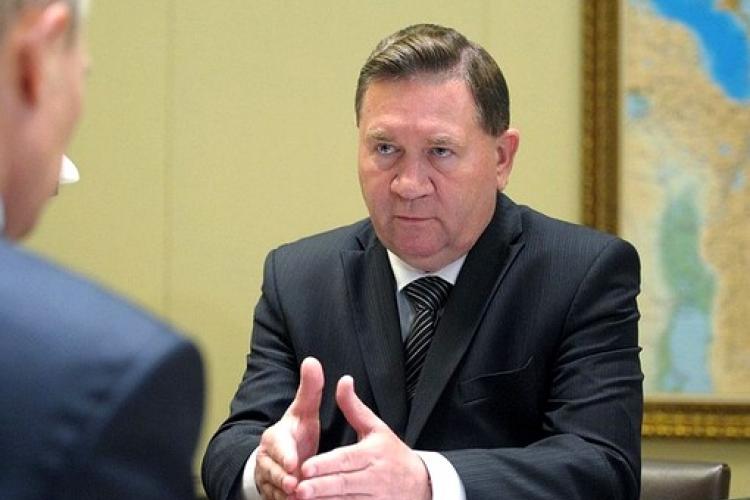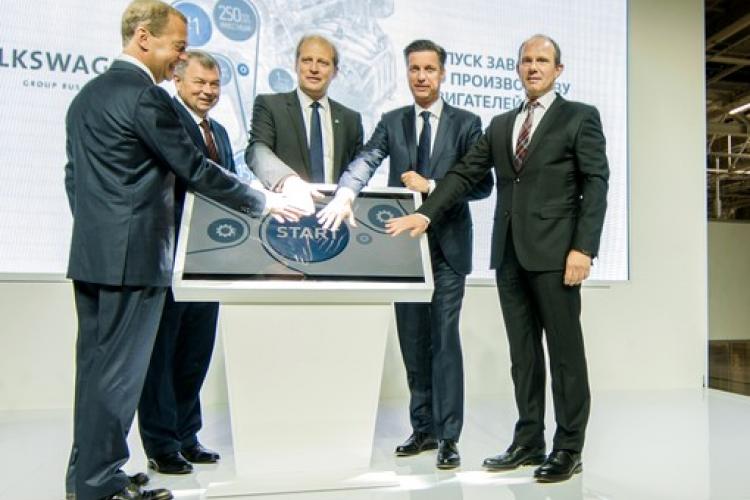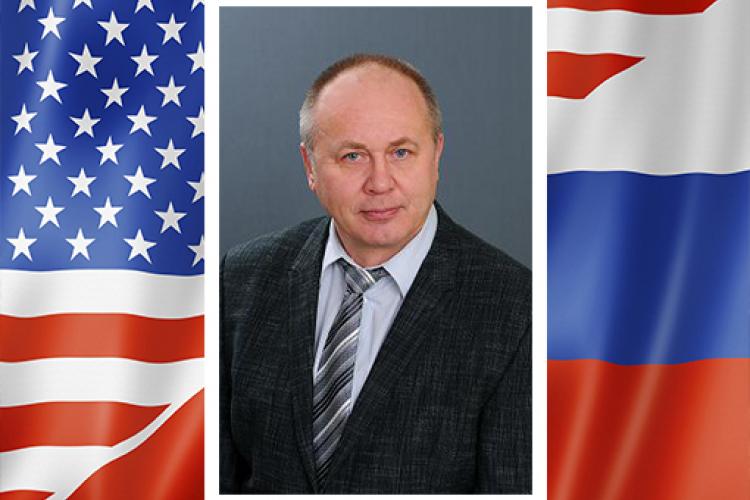
A large number of Russians have problems with their eyesight, with 40 percent of people suffering from myopia and 22 percent from hyperopia in 2015. This is a very high percentage compared to the figures from other countries in Europe. Moreover, the number of Russians with poor eye health is on the rise. The question of children’s eye care is a crucial issue, in view of the fact that the number of children having good eyesight halved in the seven-year period from 2008 to 2015.
The increasing penetration of technological advances is set to be one of the main reasons contributing to eyesight deterioration. In an era of computerization, ophthalmologists name the eyesight problems among people who spend a long time in front of the computer as CVS (computer vision syndrome). Hours in front of a computer lead to myopia, the malfunction of eye muscles and a decline in eyesight sensitivity. Children who are used to playing computer games at home for long periods at a time, together with straining their eyesight at school, are significantly vulnerable to eyesight problems. Thus, parents are aiming to actively monitor their children’s eyesight in order to prevent the further development of diseases; however, adults themselves avoid visiting the doctor and delay it for as long as possible. As a result, eyesight problems continue to grow. Moreover, ophthalmologists note that the level of awareness regarding the development of eye problems and changes to eyesight is incredibly low, and urgent measures need to be taken in order to fix the situation. Thus, some people from rural areas and consumers on low incomes buy cheap eyewear from optical kiosks, open markets or stores selling unbranded products, resulting in a greater deterioration in their eyesight.
Outlook
Manufacturers and retailers of optical goods will continue to work hard on the improvement of eyewear. The problems of high myopia and hyperopia are closely related to the education of the population and the lack of a better infrastructure for healthcare and retail channels. There are several associations and institutions in Russia working on the improvement of these social conditions, such as the Association of Ophthalmologists (unites doctors), the Optical Association (unites businesses working within eyewear), and the government body called the Russian National Committee for the Prevention of Blindness, among others. These organizations work to increase the understanding of the importance of eyesight problems and their prevention, as well as on the quality of eyewear.
Ophthalmologists are actively explaining the advantages and disadvantages of various vision correction methods, encouraging consumers to opt for hygienic and better-quality products.
However, the number of people with eyesight problems may increase in the future due to the ageing of the Russian population and a deterioration in the ecological situation. The median age of the population in Russia is expected to grow from 38.4 years in 2014 to 39.3 years in 2019 and to 43 in 2030. As older people have many more eyesight problems, the importance of a better education regarding eye health is vital in Russia. Moreover, environmental issues are leading to eyesight problems for children.
Sales of eyewear are shifting from store-based to internet retailing. In the early 2000s, the number of internet stores was low and sales were dominated by four main players. The pioneers who launched the first internet stores faced low demand from the side of consumers, who were used to buying eyewear from optical goods stores or small kiosks; however, internet retailers launched active advertising campaigns and gradually increased their customer base. The boom in internet retailing started during the economic crisis of 2009, when the number of new players entering online sales of eyewear increased and such companies offered lower prices via the internet. Online sales were positively affected by the new trend towards wearing daily disposable lenses among Russians. Those clients who choose daily disposable lenses have to buy 24 packs of 30 lenses per year. Thus, these lenses are in regular demand and are suited to online sales.
Optical goods stores started to feel strong pressure from internet retailing over the preceding five years. Internet retailers offer prices that are on average 15 percent lower for contact lenses compared to regular stores, inducing consumers to switch to internet retailing. Hence, federal optical chains launched their own internet stores, dumping prices and actively expanding to the regions. In addition, they launched active promotional campaigns to attract more consumers. Large international manufacturers started to perceive internet retailing to be a channel of equal importance to traditional stores and advised players to launch their own internet stores in order to retain their customers. Moreover, the main industry players note that sales of contact lenses via traditional stores are not that profitable, as they generate lower mark-ups. The competition between internet stores is also becoming more intense.
Internet retailing performed strongly within contact lenses, recording a value share of 27 percent in 2015. Within the spectacles subcategory, it registered a value share of only four percent. This difference was due to product specifics, as lenses are in regular demand, with the consumers’ being used to purchasing a certain brand, while spectacles are chosen carefully by trying on several pairs within a store to decide which one is better suited to them. With the background of an economic crisis, sales via the internet increased by 30 percent in current value terms in 2015, as this channel offered lower prices for eyewear and consumers were becoming more rational in their search for the lowest available prices and the highest discounts. As noted by the main industry players, sales via the internet increased in 2015, while sales through optical goods stores fell in 2015.
Internet sales are expecting to increase over the next five years. The next stage in the development of this channel is consolidation in the number of players and a broadening of the product range. As noted by the main players, internet retailing is highly fragmented and the emergence of large market leaders that will affect the pricing policy of the other players is expected in the short term. In addition, the majority of internet players will expand their ranges of spectacles, launching new internet stores and mobile apps to attract more consumers, as demonstrated by Ochkarik.
The positions of individual optical goods stores are weakening in favor of federal chain stores. Eyewear in Russia demonstrated one of the highest annual growth rates in terms of retail value and volume sales among European countries until the crisis stroke in 2014. It is considered as one of the most promising areas within Russia’s retailing.
The chain format of optical stores was launched with the creation of Lensmaster and Ochkarik in the late 1990s. They started to attract international producers of eyewear to the yet unexplored Russian market, making agreements as to the exclusive distribution of their products. In the middle of 2000s, strategically-important investors became interested in Russia, which marked the beginning of consolidation. Thus, Lensmaster attracted foreign investment and started to be more active in terms of expansion. Local investors launched the chains Smotri and Schastlivii Vzglyad. Later, Eyekraft launched a new format, starting mass automated production of spectacles, which were assembled manually in optical goods stores in the past. It was the first to develop the franchise format, which contributed towards its fast expansion.
Thus, in 2015, the top five chain optical stores were Eyekraft with 124 stores, Lensmaster with 87 outlets, Ochkarik with 62 venues, Optic Trade (brand Smotri) owning 45 stores, and Nevskaya Optica Holding with 36 stores. These companies offer high-quality products, professional ophthalmologists’ services with the newest equipment, and a wide range of products in all price bands. In addition, all of them run internet stores and are actively improving them. Moreover, optical retail chains are involved in active marketing, regional expansion, developing franchising, and the optimization of their businesses. The consumption culture and the consumers’ health awareness are developing positively in Russia. In particular, consumers are searching for better-quality products at prices they can afford. In addition, consumers are demanding a high level of service and a wide range of products, which is guaranteed in chain optical stores. During the economic crisis, optical chains are trying to agree upon lower prices with producers in order to attract more consumers. Thus, the positions of individual stores are weakening in terms of consumer demands and their number is declining, as they are not able to withstand the decline in consumer demand during the economic crisis.
The number of optical goods stores is expected to double in the next five years, as it was still low compared to the average for Europe as of the end of the preceding five years. In particular, by the beginning of 2015, there was one store per 11 thousand people in Russia, while in Europe this figure is two times bigger on average. At the end of the preceding five years, the industry consisted of large federal chains and individual optical goods stores. The tendency towards consolidation is expected to continue. Chain optical stores will further improve the quality of the eyewear they sell, as well as the services they offer. Moreover, their product ranges are expected to widen. The main industry players note that their major task is to perform active regional expansion through developing franchising. Moreover, they are aiming at optimizing their business models and are actively developing internet retailing – through improving their online stores and increasing the availability of mobile phone apps.












Leave a comment